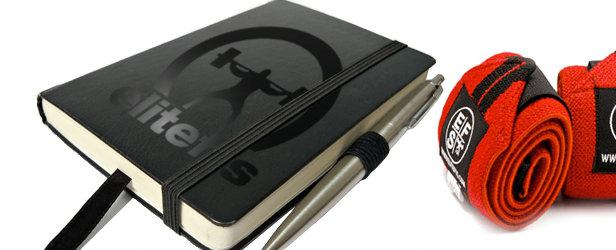
In many cases, a thorough and active training log is the only way we are able to self-analyze our gym performance (in the long term) beyond just “I missed a lift” or “I hit a lift.” Sure, you might be able to remember why you failed the first time you tried to squat or pull 405 pounds. Better yet, if you made the lift, do you remember why? Do you remember where you were weak, and if so, how did you fix it? What about 405 pounds to 425 pounds and 450 pounds? What about your first 500-pound squat? How did you get there? Maybe you got injured, took some time off, and couldn’t squat 500 when you came back. How did you get it back? Did you stall in between any of those? What did you do to overcome those stalls?
Pretty quickly all that information can pile up, but every piece of it is important. You see interviews with the world's top lifters where they are spitting back their workouts from the day before—they know what they are doing, and more importantly, they know WHY they are doing it. They know what works for them, when they’ve had too much, and what they shouldn't do. I am continuously amazed by their ability to be so in-tune with their bodies. I cannot speak for them, but in the past year of training I have become more in-tune with my body by keeping a thorough log.
***
For several years I trained with a log; however, I didn't use it for anything more than tracking where I was with different lifts. I would write my Sets x Weight x Reps and occasionally would note something like, “weight felt heavier today than normal,” and maybe I would put a random guess as to why. This continued for quite some time.
Eight months ago, however, I started to run Jim Wendler’s 5/3/1 program. To be honest, it was the first “program” I had ever run that wasn't a “12-weeks to a buff chest” or some other hypertrophy/pyramid-style training system. The change to this program was important for several reasons, but it was important for one very key reason: the weight I was going to lift on a given day was totally out of my hands. I used my one-rep max on the three power lifts and on the overhead press—that was it.
The important thing to note here was that guessing how many times I could do “X’ weight was out the window. The only part of the core program that is left up to you is your last set on the main lift. This is where Wendler gives you the option (or basically demands you) to do AMAP (as many as possible). Everything else is a prescribed rep at a prescribed percentage of your training max (10% less than your 1RM).
This was particularly helpful for me. As someone who had used his log to essentially take random guesses as to “how many times I could bench 185 pounds this week,” I was required to find something else to put in my log. No more “weight seemed too heavy/light, so need to drop/raise it next week.” I either hit my main lift or I didn't. If I missed it, it was time to go back a few cycles and take another shot at it.
The changes in my logs are significant for two major reasons. First, they allow me to know where I am weak. I am no longer wasting time trying to figure out why I could bench 185 x 10 last week but this weak I only could squeeze out eight reps. Instead, I now note a breakdown, log it, record why that breakdown occurred, and mention how I can fix it. The second significant change my logs provide is that I can now recognize important trends in my training.
My training logs started to look like this (I use a program called Evernote to track my workout on my phone, so it’s a simple copy and paste):
Again, where I started to fail, what happened, and how I could address this issue (verbal cue) in the future were all addressed here.
As I said before, I am eight months into this program and, needless to say, the weight is getting heavy in my hands and on my back, and I am starting to feel more strain with each passing week. I view this as a gigantic learning opportunity, and my logs reflect this. I’ve learned more about my body and where my weak points are. Longer entries with a detailed account of what happened during “X” set are a daily occurrence.
The second issue, which I brought up earlier, is noticing trends in your training. This can be something as simple as noticing how a certain assistance exercise corresponded with a pretty significant jump in your main lift. It can also be something like, "well, I did 'X,' and it totally blew up in my face, so I shouldn’t do that anymore. Here is an example below:
Deads
Training weight
75%x5
85%x3
95%x1+ did 6 on second attempt. First attempt: could not get if off the floor. Maybe because Sunday (two days earlier) I did stiff-legged deads. Didn't feel good in first set, rushed into it because someone else was asking to use the platform...did not take a day off after last week's training. Probably should have taken a day off. Coach showed up before second attempt, got me going. Also, he pointed out that my hips were lower than usual on my set up. Adjusted. Hulked out for six.
SBS 40/50/60%x5
Squeeze work
Hamstrings 3x15
Low back. 3x15 with plate and elitefts™ red mini band. Got sick. Laid on floor for half hour. Went home.
Related Articles:
elitefts™ Classic: Training Log Tips
52 Most Common 5/3/1 Questions











